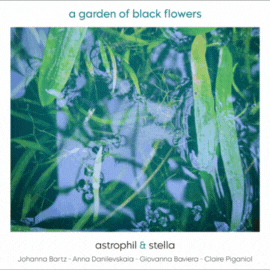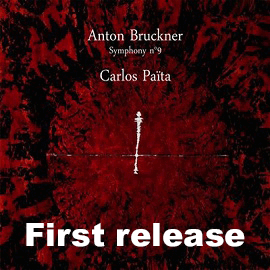Mit dem drei CDs umfassenden dritten Teil schließt William Youn nun die Aufnahme aller 21 Klaviersonaten von Franz Schubert ab. Im ersten Satz der Sonate Nr. 16 D 845 gibt es viel, was diesen Komponisten charakterisiert: Melancholie, Trauer, Poesie, Verträumtheit, Aufbruch und Fallen, Grollen und Ermattung. Die Konzentration dieser Seelenzustände äußert sich in William Youns Spiel in beispielhafter Form. Die a-Moll-Sonate, die Sechzehnte (D 845), entstand im Jahre 1824, als Schubert bereits von der tödlichen Erkrankung gekennzeichnet war und gerade sein Streichquartett ‘Der Tod und das Mädchen’ abgeschlossen hatte, dessen Stimmungen sich in der Sonate wiederfinden. William Youn nimmt sich genug Zeit für diese Sonate und macht aus ihr ein Werk, das zum Nachdenken anregt.
In der Sonate Es-Dur D 568 spielt Youn mit größter Natürlichkeit. Er gibt ihr mit einer guten Balance zwischen Vitalität und Feingefühl eine Rhetorik, die letztlich von der Ernsthaftigkeit gekennzeichnet ist, mit der der zwanzigjährige Schubert beim Komponieren vorging.
Die zweite CD beginnt mit der verspielt bis kraftvoll-entschlossenen Sonate D 850. In der 9. Sonate D 575 wird die Rhetorik auch ganz groß geschrieben, wobei die Musik auch schon mal schalkhaft werden kann.
Diese CD endet mit der verstümmelten, unvollendeten 11. Sonate, von der Youn den langsamen Satz aus dem Solitär D. 505 bezieht und diesem das Scherzo und das Allegro hinzufügt, das alles in einer spannenden Interpretation
Mit der 3. CD wenden wir zeitlich wieder zurück, zur Zweiten Sonate D 279. Youn spielt sie pianistisch brillant und sehr stimmungsvoll.
In den beiden folgenden Sonaten, der Dritten D 459, auch als Fünf Klavierstücke bekannt, und der fünften D 557 überzeugt der Pianist mit der Klarheit des Anschlags und einer eloquenten Phrasierung, vital und kraftvoll, ohne jede Verniedlichung.
Seine Gesamtaufnahme der Schubert-Sonaten beendet er mit der unvollendeten und als ‘Reliquie’ bezeichneten C-Dur-Sonate D 840.
Ihren damals sehr innovativen Charakter bringt Youn aufregend zu Gehör. Er verleiht dieser zweisätzigen Sonate im Moderato etwas Mysteriöses und betont das Moderne mit dynamischen und farblichen Kontrasten. Das Andante bringt er mit einer ganz aparten Rhythmik bestens zur Geltung, wobei die ungeheure Novität der Musik vollauf deutlich wird.
Youn bezeichnet diese Sonate als eine « mit einem offenen Schluss ». Er bringt aber, glaube ich, vor allem zum Ausdruck, dass Schubert wohl selber von seinem Neuerungsgeist so verwirrt war, dass er, wie mein Kollege Guy Wagner einmal sagte, « nicht mehr weiterwusste und das Werk auf die beiden Sätze Moderato und Andante beschränkt hat. »
William Youn bringt so eine Schubert-Gesamtaufnahme auf dem gleichen hervorragenden Niveau zu Ende, wie er sie 2019 begonnen hat.
With the three-CD third volume, William Youn now completes the recording of all 21 piano sonatas by Franz Schubert. In the first movement of Sonata No. 16 D 845, there is much that characterizes this composer: Melancholy, sadness, poetry, dreaminess, rising and falling, rumbling and weariness. The concentration of these states of mind is expressed in William Youn’s playing in exemplary form. The A minor Sonata, the Sixteenth (D 845), was written in 1824, when Schubert was already marked by terminal illness and had just completed his string quartet ‘Death and the Maiden,’ whose moods are echoed in the sonata. William Youn takes enough time with this sonata to make it a thought-provoking work.
In the Sonata in E-flat major, D 568, Youn plays with the utmost naturalness. He gives it a rhetoric with a good balance between vitality and delicacy that is ultimately marked by the seriousness with which the twenty-year-old Schubert went about composing.
The second CD begins with the Sonata D 850 which alternates from playful to powerfully determined. In the 9th Sonata D 575, rhetoric is also writ large, and the music can even become mischievous at times.
This CD ends with the unfinished 11th Sonata, for which Youn takes the slow movement from the solitaire D. 505 and adds to it the Scherzo and the Allegro, all in an exciting interpretation.
With the 3rd CD we turn back in time, to the Second Sonata D 279. Youn plays it pianistically brilliant and very atmospheric.
In the two sonatas that follow, the Third D 459, also known as the Five Piano Pieces, and the Fifth D 557, the pianist convinces with much clarity and eloquent phrasing, vital and powerful, without any trivialization.
He ends his complete recording of Schubert’s sonatas with the unfinished C major Sonata D 840, described as a ‘relic’.
Its character, very innovative at the time, becomes exciting with Youn. He imbues this two-movement sonata with something mysterious in the Moderato and emphasizes the modern character with dynamic and color contrasts. He brings out the best in the Andante with a very distinctive rhythm, making the tremendous novelty of the music fully apparent.
Youn describes this sonata as one « with an open ending. » But he is expressing, I think, above all, that Schubert himself was probably so bewildered by its novelty that, as my colleague Guy Wagner once said, « he didn’t know what to do and confined the work to the two movements, Moderato and Andante. »
William Youn thus brings to a close a Schubert recording on the same excellent level as he began in 2019.

























